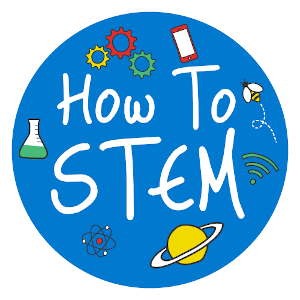
It is hard to ignore the global demand for innovation. Governments are dedicating departments to innovation, citing the acceleration of innovation as central to promoting prosperity and growth. Innovation centres are popping up at universities around the world to link academics with industry. Companies are placing innovation at the heart of their vision and mission statements.
Innovation is the key to creating a better future. Take some of the most pressing challenges facing our world at the moment: the UN’s Sustainable Development Goals. These goals are ambitious and require an innovative response, drawing particularly on knowledge and expertise from the STEM fields of science, technology, engineering and mathematics.
This poses a challenge for us as educators: that of how equip students with the relevant knowledge and skills necessary to be innovative thinkers, able to solve the complex problems of tomorrows world. Whilst we don’t know exactly what these problems will be, we do know that STEM projects provide meaningful ways for students to identify problems and come up with creative solutions. This is the very basis for innovation.
But what else should children know about innovation?
To start with, let’s get one thing clear:
Innovation is different from Invention.
The two words are closely connected but they are not the same.
So what else should children know about innovation?

Innovation doesn’t always happen with sudden breakthroughs or ‘eureka’ moments. It’s often a gradual process that can take years, decades, even centuries to emerge. Innovations are evolutionary changes to existing processes, uses, or functions, which are made better by one (or several) contributing inventions.
Take the example of tidal turbines. They convert energy from tides into electricity. We tend to think of renewable energy as a future innovation but in fact, the basic idea of turning water movement into useful energy can be found much earlier, for example in the water wheels of Ancient Greece. The technological concepts behind the water wheel have gradually evolved over time into the engineering that we see today.
Teach children:

There’s a tendency to think of history in terms of the ‘Great Man Theory’. We think of influential individuals who have made a significant contribution to society. Think Tim Berners-Lee with the world wide web or Alexander Graham Bell with the telephone.
In reality it’s not as clear cut as that. Innovations are not created out of nowhere and they are rarely linked to just one person. Instead, they build upon the ideas of others. Tim Berners-Lee took an already existing invention of the internet and built upon it, adding hypertext (www. or .com for example) to link information.
Meanwhile, the invention of the telephone was the culmination of work done by many individuals. Bell may have been the first to obtain a successful patent for it but there were many other inventors including Elisha Gray and Antonio Meucci who also created a ‘talking telegraph’.
Standing on the shoulders of giants is an excellent metaphor we can use to remember that the creator stood on someone else’s shoulders. They took the understanding gained by major thinkers who had gone before in order to make creative progress.
Teach children:

How often do we get something right first time? This is exactly the same for innovation. Thomas Edison made 1000 iterations to the lightbulb. When asked by a reporter ‘how did it feel to fail 1000 times?’ he replied ‘I didn’t fail 1000 times. The lightbulb was an invention with 1000 steps.’
James Dyson is famed for his innovative bagless vacuum design of the Dyson hoover. However, it took him 5126 vacuum design attempts before he could get a properly working vacuum.
The Wright brothers repeatedly went back to the drawing board as they struggled to create a design of engine-powered plane that would be light enough to fly. They didn’t have a university degree or background in engineering, but they did have a determination to succeed. After many failed attempts at flying, they eventually created the world’s first successful motor-operated plane.
Innovation involves a great deal of perseverance as you overcome the inevitable mistakes and setbacks along the way. None of these inventors would have succeeded if they didn’t have the determination to keep going through the failures. In fact, it was these mistakes or failures that led to their greatest achievements.
Teach children:

Sometimes, in setting out to do one thing we end up creating or discovering another. There are lots of examples of important discoveries that just weren’t planned. Alexander Fleming is one such accidental discover. He had been experimenting with bacteria in Petri dishes when he discovered that one had been contaminated by mould. On closer inspection he saw that the mould was killing the bacteria around it. This mould is now used as a medicine called penicillin which helps to destroy bacteria.
Other accidental discoveries include Play-Doh, Coca-Cola and the microwave oven. Such new creations can be more valuable than we ever could have imagined. Accidental discoveries are a surprisingly frequent part of the innovation process. We can’t plan what the future holds and sometimes creative ‘tinkering’ can stumble upon things that we didn’t know we even needed.
Teach children:
Read more about ‘inspiring an innovation mindset’ in Emily Hunt’s article for STEM:ED magazine Issue 3 here:
https://issuu.com/stemedmagazine/docs/final_stem_ed_magazine_issue_3/28




